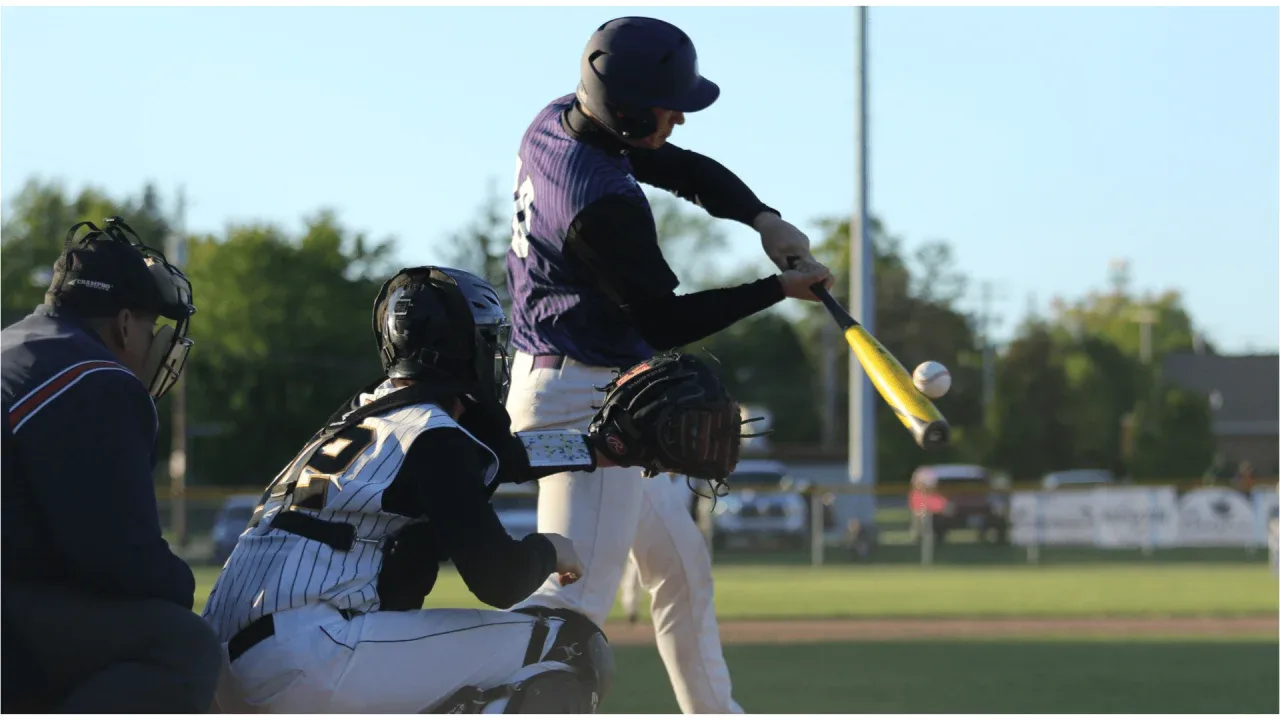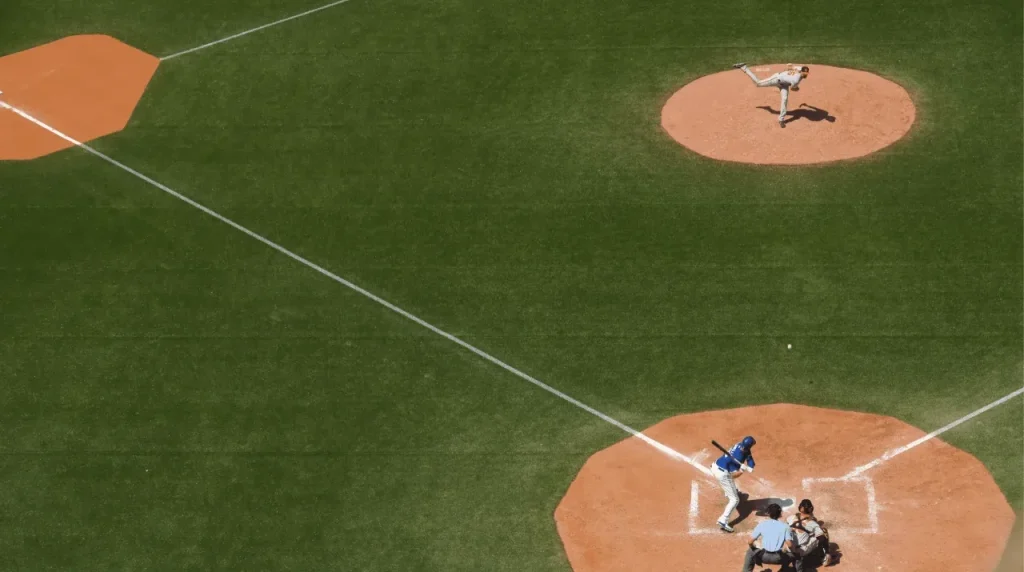Table of Contents
ToggleIntroduction
Understanding the rules and various components of baseball can be a challenging task. Among the essential aspects of the game is comprehending the error in baseball made by defensive players that lead to a base runner reaching or advancing further than they would have otherwise. Learn about baseball errors, at-bats, and official statistics recording in this article.
What is an Error in Baseball?
In baseball, an error is a mistake made by a defensive player that allows the opposing team’s batter or runner to advance one or more bases or reach base safely. Errors are recorded in a baseball game’s statistics and can impact a player’s fielding statistics and the team’s win-loss record. To be considered an error, the official scorer must deem the mistake something an average fielder could have made an out on with a normal effort.
Common types of errors include throwing, fielding, and tagging errors. However, certain actions do not count as errors, such as if a fielder makes a difficult but unsuccessful attempt to catch a ball or if a batted ball takes an unusual bounce.
It’s important to note that reaching based on an error is not an official at-bat for the batter. Additionally, error rates and fielding quality are considered in advanced stats for individual and replacement players. Overall, errors are a significant part of baseball and can impact the outcome of a match.
– Definition of an error
In baseball, an error is a mistake made by an outfielder that permits a batter or base runner to advance or reach base safely. Common types of errors include throwing, fielding, and tagging errors. However, not all mistakes made by fielders are considered errors; such as if a fielder makes a difficult but unsuccessful attempt to catch a ball or if a batted ball takes an unusual bounce.
– Types of errors
There are two kinds of mistakes in baseball: fielding errors and throwing errors.
A fielding error occurs when a defensive player fails to cleanly field a batted or thrown ball. Examples of fielding errors include a fielder dropping a pop-up, mishandling a ground ball, or failing to catch a line drive.
A throwing error occurs when a defensive player makes a poor throw, resulting in a runner advancing or reaching base safely. Examples of throwing mistakes include:
· Overthrows.
· Errant throws on potential double plays.
· Inaccurate throws to first base.
Errors are important in baseball as they can change the game result. It’s important to note that reaching based on an error is not an official at-bat for the batter. Additionally, sacrifice flies, and sacrifice bunts are not considered errors, even if a defensive player fails to make a play on the ball.
– How errors are recorded
In baseball, errors are recorded when a defensive player fails to field or throw the ball cleanly, resulting in a runner reaching base safely or advancing. These errors can be either fielding errors or throwing errors. Fielding errors come from botched catches, bobbled ground balls, or missed pop-flies. Meanwhile, throwing errors come from inaccurate or wild throws. Errors can impact a player’s fielding statistics and overall game performance. To record an error, the official scorekeeper logs the player committing the error and the type of error in the game’s official scorebook.
Common Causes of Errors in Baseball

error in baseball
Errors happen constantly in baseball and can change the outcome of a game. Some common causes of errors include misjudged balls, errant throws, mishandled ground balls, lack of communication between players, and mental lapses. These mistakes can be made by individual players or the team as a whole. Fielding errors are a major part of the game and can significantly affect a player’s statistics and a team’s overall performance. It’s important for players to constantly practice their fielding skills and work on improving their defensive abilities to minimize the occurrence of errors.
– Fielding errors
There are multiple possibilities in which this can occur, for instance, when a fielder fails to catch a pop-up or makes a bad throw to first base.
Reaching based on an error does not count as an official at-bat, but it does count toward a player’s on-base percentage.
Errors are tracked as a statistic in baseball and can impact a player’s defensive rating and overall performance on the field.
– Throwing errors
B. Throwing errors occur when a defensive player makes an errant throw that allows the runner to advance beyond their intended base. This type of error is distinct from fielding errors, which occur when a defensive player mishandles a batted ball. Throwing mistakes can be costly to a team, as they often result in extra bases for the opposing team and can extend innings. Keeping track of throwing errors is key to measuring a player’s defensive abilities.
– Catching errors
A catching error in baseball is when a defensive player fails to catch a ball they should have seen. This can happen due to misjudging the ball’s trajectory, taking their eyes off it, or simply dropping it. Catching errors can result in base runners reaching base safely and affect the game’s outcome. Getting based on a mistake doesn’t count as an official at-bat, but it impacts a player’s on-base percentage. Other types of errors in baseball include fielding, throwing, and tagging, negatively impacting the defensive team’s performance and potentially giving the opposing team different bases or runs.
– Mental errors
D. mental errors, also known as mental mistakes, are errors in judgment or decision-making by a fielder in a baseball game. Mental errors include missing a cutoff man, failing to cover a base, or not getting into the proper position before a play. These types of errors can be just as costly as physical errors, as they can lead to different bases or runs for the opposing team. Coaches and managers often focus on reducing mental errors to improve the team’s performance.
Consequences of Errors in Baseball

error in baseball
Errors in baseball can have significant consequences that affect a player’s performance, the team’s performance, and the outcome of the game. These consequences include:
1) Runners advancing, giving the opposing team an advantage.
2) Increased pitch count, leading to fatigue and impacting a pitcher’s performance.
3) Lowered fielding percentage, negatively impacting a player’s reputation.
4) Lost opportunities, giving the opposing team more chances to score and ultimately impacting the game’s outcome.
Therefore, players must practice good fielding techniques to minimize errors and maximize their team’s chances of success.
– Impact on team performance
An error in baseball can have a significant impact on the performance of a team. It can result in extra bases or even runs for the opposing team, leading to a disadvantage for the fielding team.
Errors can also cause pitchers to throw different pitches, resulting in fatigue and affecting their performance. In addition, it can lower a player’s fielding percentage and potentially damage their reputation. Missed opportunities for outs can give the opposing team more chances to score, ultimately affecting the game’s outcome.
– Effect on individual player statistics
Errors in baseball occur when a defensive player commits a mistake that allows a batting average or base runner to progress or reach a base. This negatively impacts a player’s fielding percentage and can increase the number of unearned runs against their team. However, it does count towards the player’s time on base. To improve fielding, players can practice and train. Advanced stats like the quality of fielding and defensive runs saved to provide a better analysis of a player’s defensive abilities beyond just errors.
– How errors are viewed by coaches and fans
Errors in baseball can be a source of frustration for coaches and fans alike. A defensive player’s error can often cost the team a run or even the entire game. Coaches typically view errors as a failure to execute the basics of fielding and catching the ball and may push players to focus on improving their skills in those areas. However, some fans may perceive mistakes as a display of incompetence or a lack of effort from the player. However, it’s important to remember that errors are a part of the game, and even the Top athletes may commit errors. From time to time. How they bounce back from those mistakes truly sets them apart.
How to Reduce Errors in Baseball

error in baseball
To reduce errors in baseball, players should focus on their fielding technique, practice regularly, and communicate with their teammates. They should also stay alert, use the correct type of throw, and be aware of the playing surface. By improving their skills and staying focused, players can greatly reduce errors and enhance their performance on the field.
– Proper fielding techniques
Proper fielding techniques are essential to reduce errors in major league baseball. Players should focus on their footwork, positioning, and communication with their teammates during practice and games. It is important to stay attentive and aware of the game situation and use the appropriate throw type for each play. Players should also be mindful of the playing surface, especially when playing on artificial turf. Consistent practice of proper fielding techniques can greatly improve a player’s defensive performance and benefit their team’s overall success.
– Correct throwing mechanics
1. Footwork: Proper throwing starts with foot positioning. The throwing foot should land on the same side as the throwing arm, and the opposite foot should point toward the target.
2. Arm Path: The throwing arm should follow a fluid motion from behind the body to over the shoulder towards the target. The elbow should be aligned with the shoulder, and the wrist should remain straight while releasing the ball.
3. Body Movement: The proper throwing should engage the entire body. Use a wind-up or step-and-throw motion, engaging the legs, hips, and core muscles for power and accuracy.
4. Mastering the correct throwing mechanics takes time and practice, but it is crucial for success on the field. With proper mechanics, players can consistently throw strikes and make accurate throws in any situation.
– Importance of practice and repetition
Practice and repetition are crucial for success in any field, including baseball. Players must practice regularly to improve fundamental techniques like throwing, catching, and hitting. Consistent practice helps identify strengths and weaknesses, while repetition develops muscle memory, enhancing style and efficiency. This leads to better performance on the field, where quick decisions and actions matter. Practicing and repeating fundamental techniques is essential for baseball players to improve their skills and succeed in games, making them the building blocks of success in any field.
– Mental preparation and focus
In addition to physical training, mental preparation, and focus is crucial for athletes to perform at their best. The mental practice involves visualizing success and developing strategies to overcome obstacles. Deep breathing and mindfulness can help athletes stay focused and calm under pressure. By prioritizing mental preparation, athletes can improve their confidence, reduce anxiety, and enhance their overall performance on the field.
FAQ Section
– What happens when an error is made in baseball?
When an error is made in baseball, a defensive player has made a mistake that allows the batter or runner to advance or reach base safely when they should have been put out. This can negatively impact a player’s fielding statistics and the team’s overall performance. It may also result in an extra-base hit for the opposing team, affecting a pitcher’s earned run average (ERA). Examples of errors include:
· Missing a throw to first base on a ball.
· Dropping a fly ball.
· Mishandling a ground ball.
– Can a player be given an error and still make a great play?
In baseball, an error occurs when a defensive player’s miscue results in the batter or base runner being able to advance or reach base without being put out. Examples of errors can include a fielder missing a catch, making an errant throw, or failing to tag a player. Getting based on a mistake does not count as an official at-bat, but it does count toward a player’s on-base percentage.
Interestingly, a player can make a great play and still be charged with an error. For example, if a fielder makes a diving stop but then makes an errant throw that allows the batter to reach base, they may be given an error even though they made an impressive play. Error rates are closely monitored and analyzed in baseball statistics to evaluate the fielding quality of individual players and teams.
– How are errors calculated for pitchers?
In baseball, errors are defensive mistakes that allow batters or base runners to advance. They’re tracked as a statistic to evaluate defensive players. For pitchers, errors are limited to throwing mistakes or fielding mistakes when they have a play. Errors can lead to runs being scored, but not all defensive mistakes are considered errors. Errors are an important part of evaluating defensive players in base on balls.
– Do errors affect players’ chances of making the Hall of Fame?
Baseball players are often judged by their hitting, wild pitch, and field ability. Defensive mistakes, commonly known as errors, can significantly impact a game’s outcome. However, the impact of mistakes on a player’s Hall of Fame chances is debatable. While there are no defined protocols regarding the number of errors allowed for a player to be inducted into the Hall of Fame, fielding ability is often considered in conjunction with a player’s offensive statistics. Defensive prowess and other factors such as longevity, awards, and championships can affect a player’s chances of making the Hall of Fame.
Conclusion
In conclusion, an error in baseball is a defensive misplay that allows a batter or base runner to advance one or more bases without a hit or stolen base. Reaching based on an error does not count as an at-bat but does count toward an on-base percentage. A scorer’s judgment determines an error in the baseball game and typically occurs when a fielder fails to make a play that could have been made with ordinary effort. Mistakes are important for evaluating defensive players and teams and can impact game outcomes. Players, coaches, and baseball fans must know what qualifies as an error in the game.
– Recap of key points
An error in baseball is a fielding mistake made by a player that allows the batter or baserunner to advance or reach a base safely.
Reaching based on an error does not count as an official at-bat for the batter, but it does count toward their on-base percentage.
To be considered an error, the mistake must be something that a player of batting average skill should be able to make, and it must be something that directly leads to a batter or baserunner reaching base safely.
Common examples of errors include:
· Fielding is based on balls and flying balls poorly.
· Making wild throws or tagging errors.
· Dropping routine catches or pop-ups.
.Errors are recorded as statistics for individual players and teams and can significantly impact a game’s outcome.
– Final thoughts on understanding baseball errors.
Understanding baseball errors is crucial for fans and players alike. An error is a defensive mistake that leads to a batter or baserunner reaching base safely. However, not all mistakes count as errors. To be considered an error, the mistake must be something that a player of batting average skill should be able to make. Reaching based on an error does not count as an official at-bat for the batter, but it does count toward their on-base percentage. Common examples of errors include poor fielding of foul balls and fly balls, wild throws, tagging errors, and dropped routine catches or pop-ups. Fans and players can assess the fielding quality and improve their game by understanding and tracking errors.

